Debut of Nikon F3
Evolution of electronic cameras and Nikon F3
Electronic SLR cameras and lower-price models
Production of single-lens reflex (SLR) cameras in Japan reached the 7.56 million mark in 1980 from the 2.76 million mark in 1974, having reached the peak of its popularity. (Fig. 6-5).
This was the result of the SLR cameras becoming increasingly electronized, so that they were coming out with varied exposure control options, improved ease of operation for photography with the program AE (automatic exposure control), reduced size and lower prices.
Electronic SLR cameras became popular around 1965 with the introduction of electronic shutters for automatic exposure control. The circuit configuration was initially a small-scale analog design. Around 1975, digital control became available with a large-scale circuit configuration with a microcomputer to allow shutter control using a crystal oscillator (quartz).
The downsizing of SLR cameras accelerated from 1975 onwards with the emergence in 1973 of compact and lightweight 135-format SLR cameras weighing 470 g.
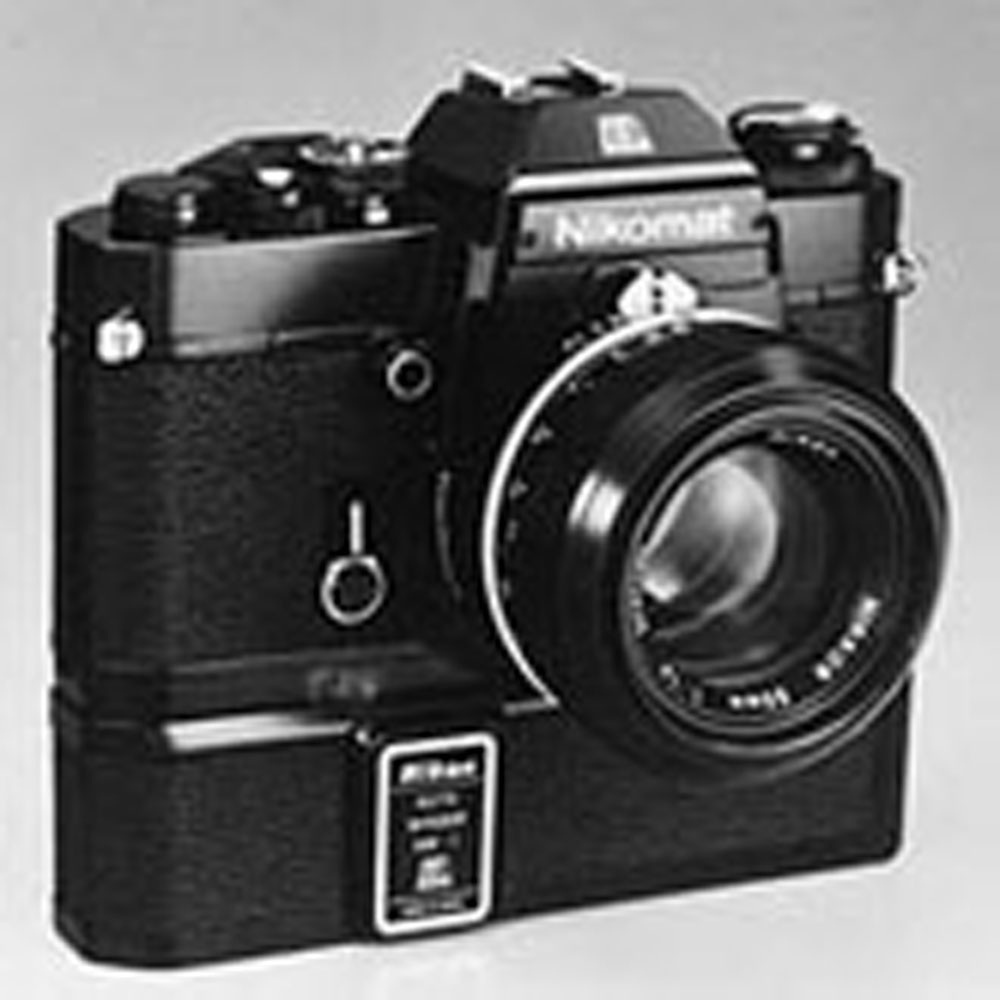
In keeping with the trend toward electronic and compact SLR cameras, we released Nikomat EL (weighing 780 g) with an electronic shutter in 1972, and Nikomat ELW in February 1976.
The Nikomat ELW inherited the aperture-priority automatic exposure control of EL and newly incorporated the coupling and electric contact point for automatic film winding with the auto-winder AW-1, and a power switch on the ring around the shutter release button in addition to that on the film advance lever.
The Nikomat ELW with the auto-winder AW-1 won the Good Design Mark in 1976.
Our SLR cameras with the TTL exposure meter adopted the full-aperture metering for exposure measurement. However, it was then necessary to let the exposure meter on a camera learn different maximum apertures depending on the lens used by turning the aperture ring to the full and returning it to the original position, after mounting the lens to engage the shoe on the aperture ring and the exposure meter coupling pin on the camera body.
Then, we marketed AI (Automatic Maximum Aperture Indexing) System in 1977 to provide automatic correction of the maximum aperture once a lens was mounted, and released the AI System-integrated cameras in succession as follows by redesigning the existing models:
In March 1977, Nikon F2 Photomic A from Nikon F2 Photomic S, and Nikomat FT3 from Nikomat FT2;
In May in the same year, Nikon EL2 as an upgraded version based on the integration of Nikomat EL and ELW; and
In July of the same year, Nikon F2 Photomic AS from Nikon F2 Photomic SB.
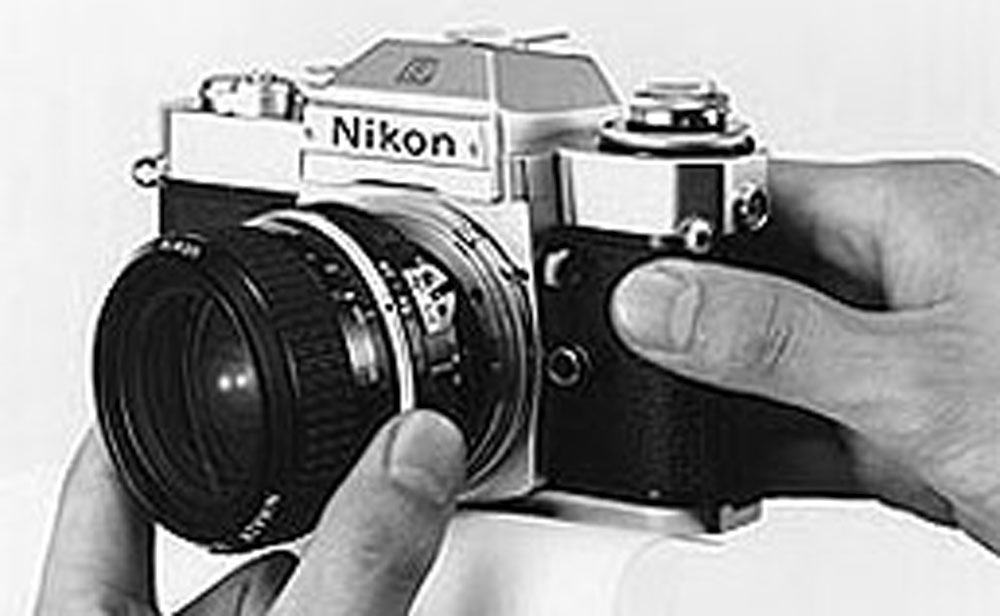
The AI System involved changes in the design of the lens diaphragm mechanism; next, we focused lens production on AI Nikkor. The AI Nikkor lenses were compatible with our existing SLR cameras (F mount), and most of the existing Nikkor lenses were made to accommodate the AI System through some modifications.
In April 1976, the shutter speed-priority AE SLR camera which offered features such as a microcomputer (configured with CPU in the form of a single module on a flexible board), unitized internal mechanisms, 50 mm f/1.4 standard lens, and prices far below 100,000 yen appeared in the home market. In response to this, the market trend of AE SLR cameras was directed towards low-end models.
In order to accommodate the trend toward compact size (142 x 89.5 x 60 mm), reduced weight (590 g) and lower prices, we brought out an AI-compatible new model Nikon FM (the model with 50 mm f/2, put on sale at a suggested retail price of 81,000 yen) in May 1977.
The Nikon FM sold well, though its shutter was mechanical and involved manual exposure control, and then, in April in the next 1978, the aperture-priority AE SLR camera Nikon FE (with a 50 mm f/1.8 at 95,000 yen) with the electronically controlled shutter went on sale.
The FE was favorably received and the sales increased, reaching the sales volume of 250,000 per year and a total turnover of 10 billion yen for three years from FY 1979 to FY 1981, which made this model a mainstay of the sales in Nippon Kogaku K.K.
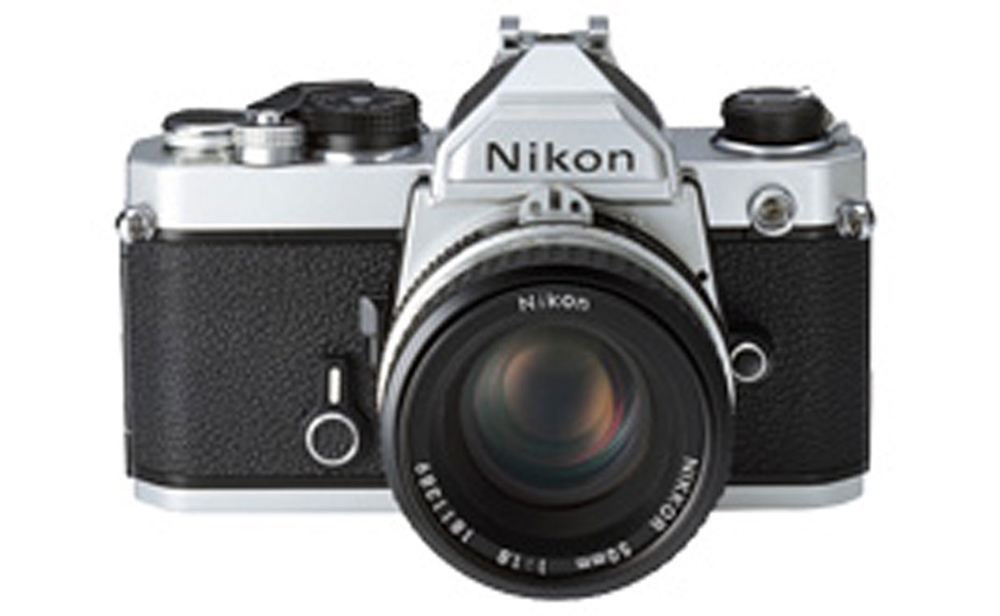
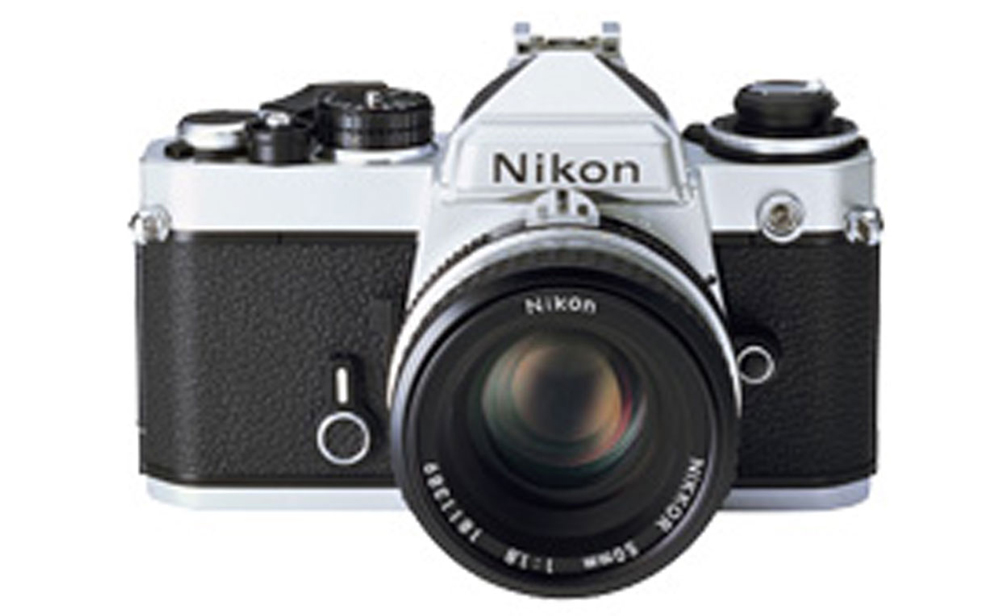
Specifications of Nikon FE
| Type | Electronically controlled 35 mm single-reflex lens focal-plane shutter camera |
|---|---|
| Exposure control | A (aperture-priority automatic) and Manual |
| Focusing screen | Split micro design (K type), interchangeable with B / E types |
| Metering system | TTL center-weighted full-aperture metering, Metering range EV1 to 18 with ASA/ISO 100 film Film speed setting ASA/ISO 12 to 4,000 |
| Exposure compensation range | +2 to -2EV |
| Exposure lock (AE lock) | Available with self-timer lever |
| Shutter | Automatic: 8 to 1/1,000 sec. (step-less), Manual: B and M90 (1/90 sec.), 8 to 1/1,000 sec. (16 steps), For B and M90, mechanical shutter speed selection |
| Flash sync | X setting only, built-in ready-light for use with the optional Speedlight unit synchronized at 1/125 sec. or less |
| Dimensions & Weight | (Approx.) 142x89.5x57.5 mm; 590 g (body alone) |
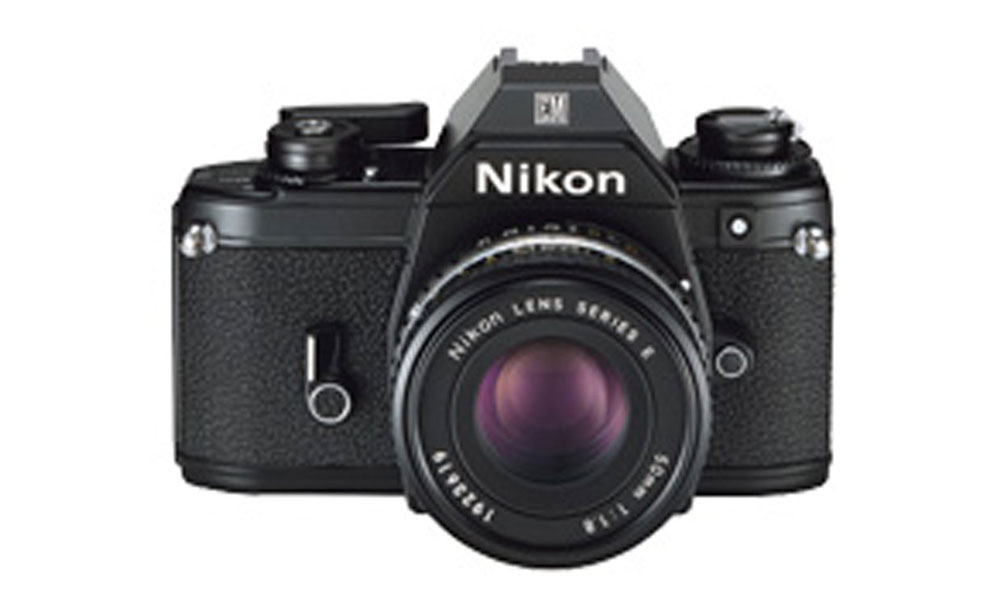
In addition, in response to the request by the U.S. market for lower-priced models, the compact-sized (134.5x 86 x 54 mm) and lightweight (460 g) AE SLR camera Nikon EM was introduced in March 1979 for beginners and women, and the export was started.
We commissioned Giorgetto Giugiaro (1938- ), a famous Italian car and industrial designer, to take charge of the final design of the exterior of EM similarly as in the case of the exterior design of the flagship model Nikon F3.
A year after its introduction, also in Japan in March 1980, Nikon EM (with 50 mm f/1.8, 60,000 yen) went on sale in conjunction with the release of the flagship model Nikon F3, and the sales volume of EM in FY 1980 exceeded 400,000 in total both at home and abroad.
The EM kept gaining favor and the sales volume reached 1.53 million in total at the end of 1984.
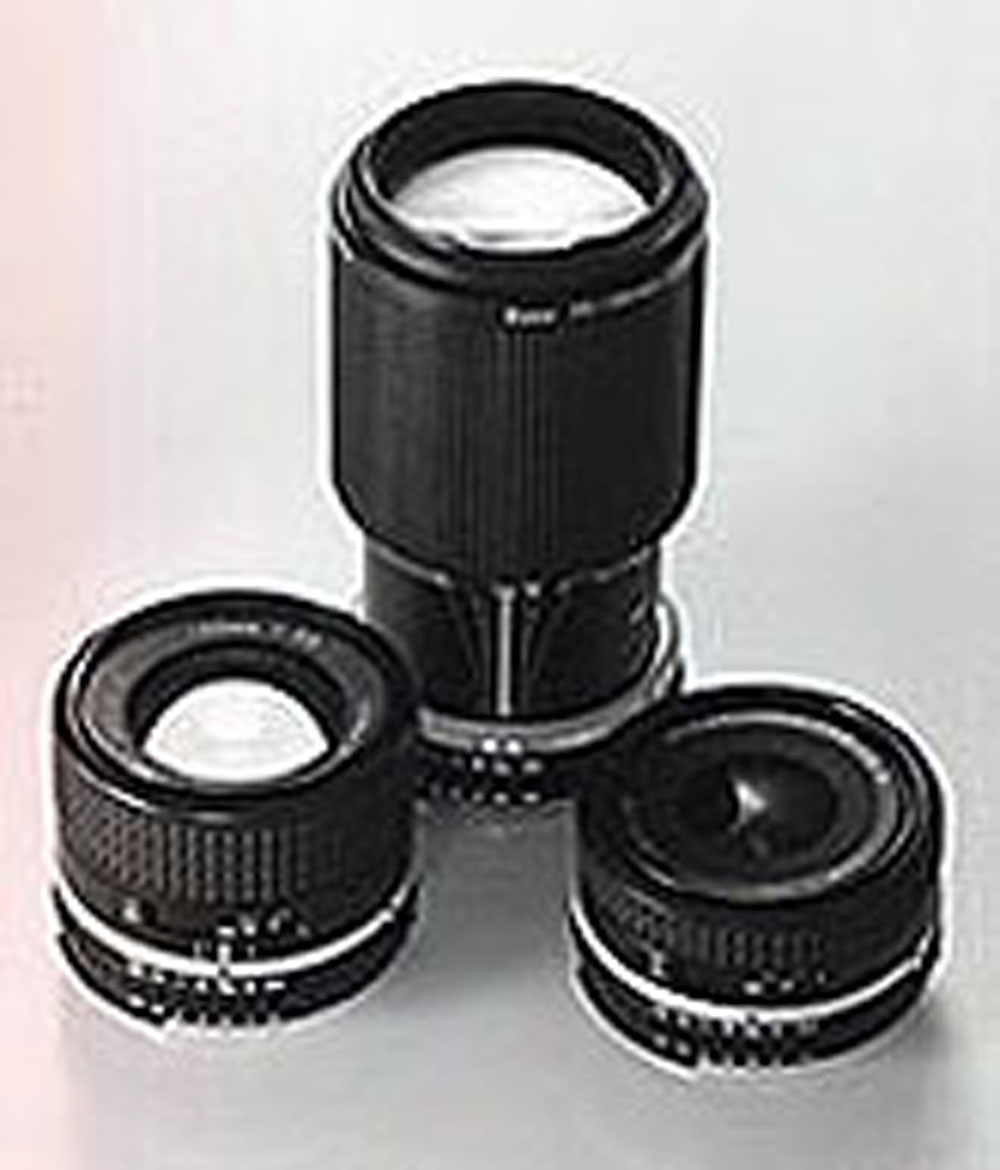
In response to the introduction of the low-end EM, also for the lenses, a new lower-priced Nikon Lens Series E was brought out at home in Japan with the three models (50 mm f/1.8, 35 mm f/2.5, and 100 mm f/2.8), and in May 1980 Zoom 75 - 150 mm f/3.5 was added.
In May of 1981, all models of Nikon Lens Series E, which had been marketed at home in Japan, were refreshed in the exterior and standardized to the AI Nikkor lenses.
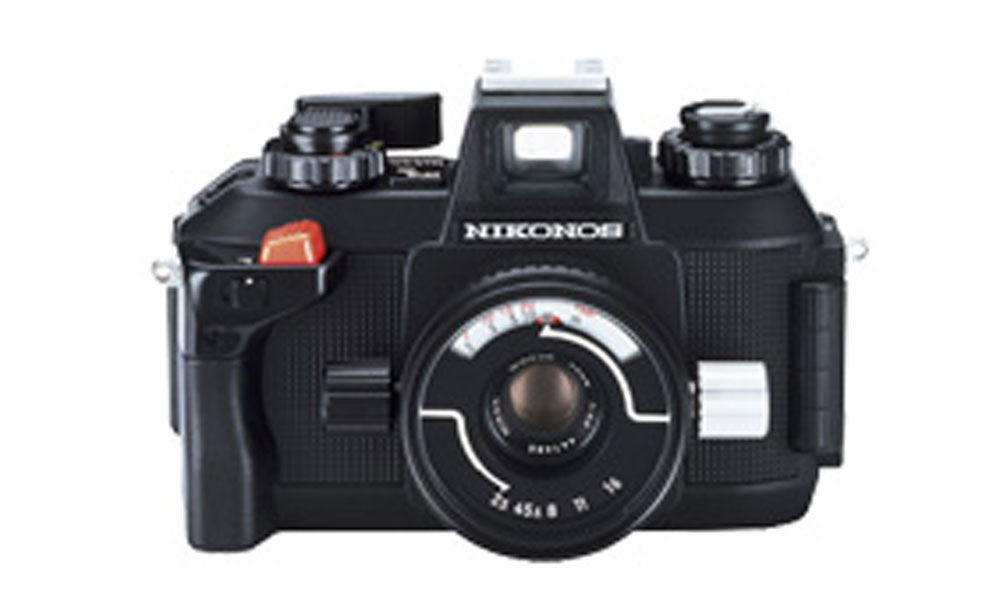
In addition, in July 1980 NIKONOS IV-A was released as a successor to NIKONOS III through a complete change of the mechanisms involving the substitution of mechanical shutter by the electronically controlled type, incorporation of TTL metering aperture-priority AE and ease of film changing by opening/closing the back cover.
Such a series of model lineups helped increase the number of Nikon fans and as a result, the sales of Nikon products doubled to 74 billion yen in FY 1980 from 36.4 billion yen in FY 1974.
Development of Nikon F3
Once the production of Nikon F2 (1971) was put on track, the designer team got down to product concept for the next-generation flagship model, later known Nikon F3.
The Nikon F2 adopted the electronic circuits for exposure control and other mechanisms, though the shutter was the mechanically controlled, which had gained the absolute trust of professional photographers.
However, based on the concept that "without introduction of electronic technologies, only so much can be accomplished in terms of developing multifunctional cameras and at the same time further enhancing reliability", we cast aside the then prevailing concept that high-end single-lens reflex cameras should be manual (for exposure control), and decided to develop an electronically controlled shutter for the next-generation flagship model by applying the electronic technologies which had been demonstrated to be sufficiently reliable in the development of Nikomat EL, to the mechanical design of Nikon F2 as possible.
This was backed up by our confidence that even the professional photographers who had been distrustful of electronically controlled cameras, would favorably receive any highly reliable, multifunctional flagship model, if we could implement it successfully.
In addition, one of the key features of the Nikon F3 included the motor drive, which had been designed based on the concept that it was not an accessory but rather it was considered an integral part of the camera. The motor drive speed increased to 6 frames/sec. from 4 frames/sec. in the Nikon F2, to satisfy the requests by professional photographers. This enhancement was implemented free from any voltage increase with the adoption of a coreless motor, and thanks to the increased efficiency of the gear train for the film winding system and the resultant reduced load on the motor. An additional provision was also made for noise reduction.
The development of electronic Nikon F3 was started , using only analog circuits. However, the information volume to be processed was too large for handling by the analog ICs (integrated circuits) of the existing level. Then, the direction was reversed and the display circuit was to be digitized. We planned to adopt the liquid crystal (display element) for reduced power consumption than the LED (light emission diode) which was commonly used for cameras in those days. The liquid crystal (LC) had been put into practical application only for a few years for watches and other some articles, though we decided to adopt the LC after due consideration to durability.
It was in March 1977 when the design was started formally after the product conception and organization of the prototype through integration of trial-manufactured parts.
The design philosophy consisted of implementing three objectives, 1) high quality and high reliability, 2) ease of operation and versatility, and 3) automatic operation, on the basis of the inherited philosophy of F2. In addition, electronically control capabilities and energy saving facilities were included.
For the F3 shutter, a modular design of our original horizontal-travel titanium foil shutter was selected. In the first year, a thorough analysis was carried out on the accuracy and durability of the shutter to ensure adequate mechanical reliability. During the process, a governor was developed that automatically allows precise adjustment of shutter operation electrically for improved efficiency of assembling operation.
For F3, the VE (value engineering) methodology was applied to reduce the weight and the number of component parts used, and a prototype was completed in November 1978.
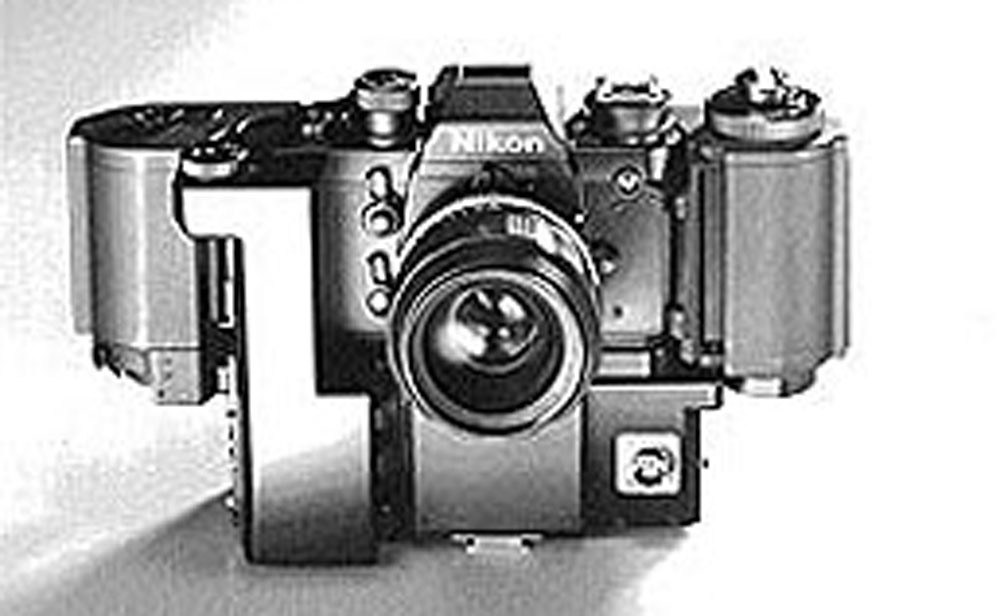
In the fall of 1978 when the development of F3 reached the completion of prototype, we were asked by NASA to supply the cameras for the first space shuttle (Space Transportation System: STS) to be launched in 1981. This request came based on our track record of supplying Nikon Photomic FTN for Apollo Program and Skylab Program in 1970s.
NASA provided the exacting specifications that the automatic exposure control cameras should be supplied in one year and a half and that the camera should be able to take a total of 250 pictures and allow film changing even during photography. However, we accepted the order believing that we could fulfill the requirements by applying the technical know-how for F3 under development and drawing on the experience at the Apollo Program. We succeeded as scheduled and developed a "Big" camera for the long 250-exposure film, and a "Small" camera for 72-exposure "thin film", and delivered the two models "Big" and "Small" in May 1980.
The cameras successfully passed the tests carried out at the Johnson Space Center in Houston, Texas. The small camera was loaded in the space shuttle Columbia launched in April 1981, and accomplished the mission satisfying the expectations for 100% reliability without preparation of any backup camera.
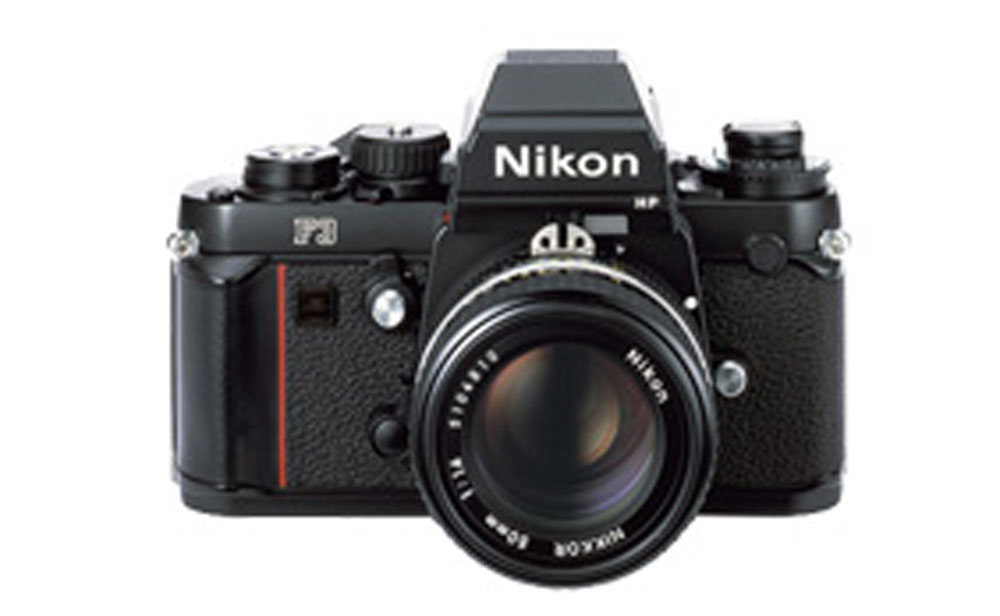
The Nikon F3, which was under commercialization in conjunction with the development of the NASA specifications-based cameras, was released in March 1980 as the flagship electronically controlled aperture-priority AE SLR camera. The body color was black only, and the suggested retail price was 175,000 yen (with 50 mm f/1.4).
The exterior of the integrated camera body and motor drive MD-4 was designed by Giorgetto Giugiaro. The novel design aiming at a simple form with a concave section on the front of the body for gripping and the impressive red vertical line exerted a large influence on subsequent camera designs.
The specifications of Nikon F3 at the time of release are listed below.
Specifications of Nikon F3
| Type | Electronically controlled 35 mm single-lens reflex (SLR) focal-plane shutter camera |
|---|---|
| Exposure control | A (aperture-priority automatic), Manual |
| Viewfinder | Eye-level finder DE-2 as standard, interchangeable with 3 other types Split micro design (Type K) of focusing screen provided as standard, interchangeable with 19 other types |
| Metering system | TTL center-weighted full-aperture metering Metering range: EV 1 to 18 with ASA/ISO 100 film Film speed setting: ASA/ISO 12 to 6,400 |
| Shutter | Automatic: From 8 to 1/2,000 sec. (step-less), Manual: 8 to 1/2,000 sec. (18 steps) including T, B and X (1/80 sec.) Mechanical shutter at T, Mechanical setting (1/60 sec. or T) available with the backup mechanical release lever when batteries become weak or exhausted |
| Flash sync | X setting only, Speedlight unit synchronized at X (1/80 sec.) or less TTL automatic flash exposure control available with the dedicated Speedlight SB-12 or SB-11 (with use of TTL flash exposure control cord SC-12) |
| Dimensions & Weight | (Approx.) 148.5 x 96.5 x 65.5 mm; 700 g (body alone) |
The 1.55V G13 silver oxide battery (currently known as SR44 silver battery) was not available for backup in some districts in those days. Then, in order to prevent a shooting block due to depleted batteries, the mechanical control shutter speed of 1/60 sec. remained available.
The flagship electronic SLR camera F3 introduced by our designer team based on the foresight and technical know-how was favorably received also by professional photographers from the very beginning of release and sold well. In March 1982, Nikon F3 High-Eyepoint furnished with the high-eyepoint finder DE-3 as standard was added to the lineup, and the total sales volume exceeded 751,000 (as of September 1992).
In 2000, discontinuance of the production was announced.
For the Nikon F2 Series, the production was discontinued in June 1980, with a total production of the 816,000 units.
Incorporation of high technology

Nikon F3 came with many more functions, surpassing the F2 series. It was designed with a higher-precision exposure control, and the TTL metering through viewfinder was replaced by the TTL through-body metering.
The reflex mirror was a newly developed "pinhole mirror" which contained about 50,000 pinholes (20 µm x 30 µm (micrometer) elliptical non-deposit section) on the mirror surface to form the translucent central part.
The TTL through-body metering system was adopted because of the following advantageous features.
First of all, the TTL automatic flash exposure control was able to detect the light rays reflected from the film surface at the same light sensor as used for exposure measurement, using the dedicated Speedlight SB-12.
Also, there was no need for exposure compensation even after changing viewfinders or focusing screens.
Thus, a cameras compatible with this system could be used with up to 4 types of viewfinders (5 types when the High-Eyepoint finder DE-3 was included) and up to 20 types of focusing screens.
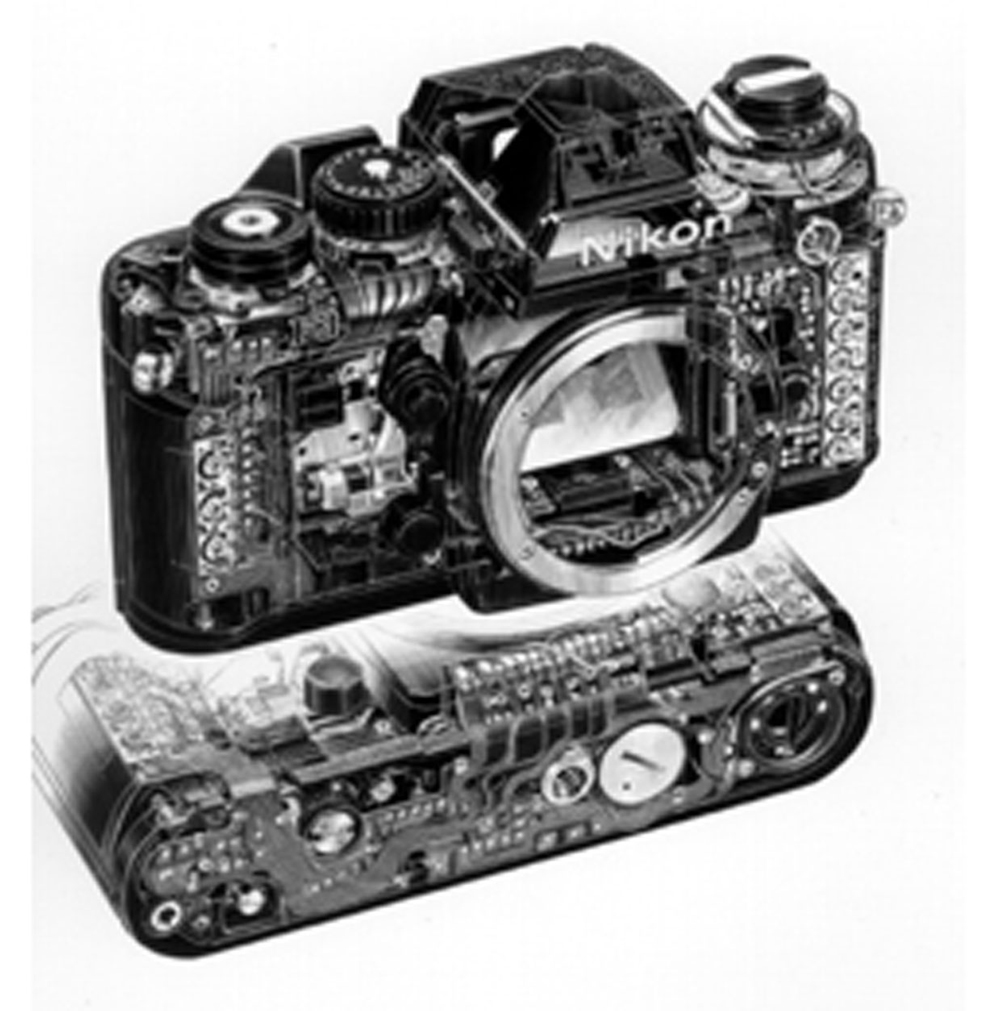
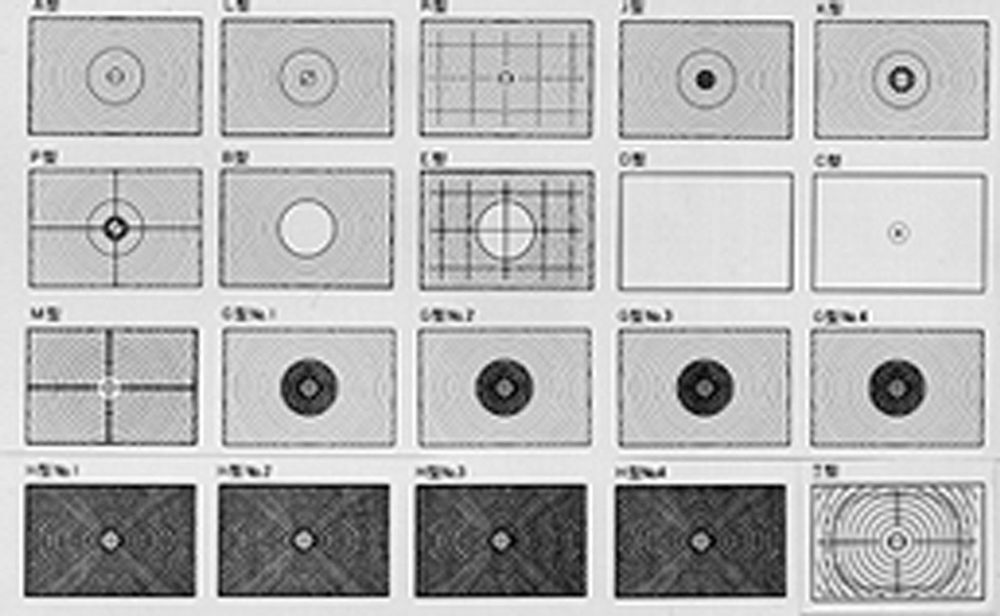

(From left: Eye-level finder, High-powered finder, Action finder, and Waist level finder)
Adoption of the liquid crystal display (LCD) was one of the innovations. Among the cameras by Nippon Kogaku, F3 was the first to provide exposure data on the LCD.
The shutter speed control, the heart of the exposure control mechanism, was based on the digital circuits which provided the control on the basis of the constant normal frequency of quartz (crystal oscillator). The accuracy of the shutter speeds in the low range in particular was increased considerably.
The shutter release button was the electromagnetic release type, which eliminated the junction (engagement) with any mechanical parts of the shutter and made possible the electrical interlock with the motor drive.
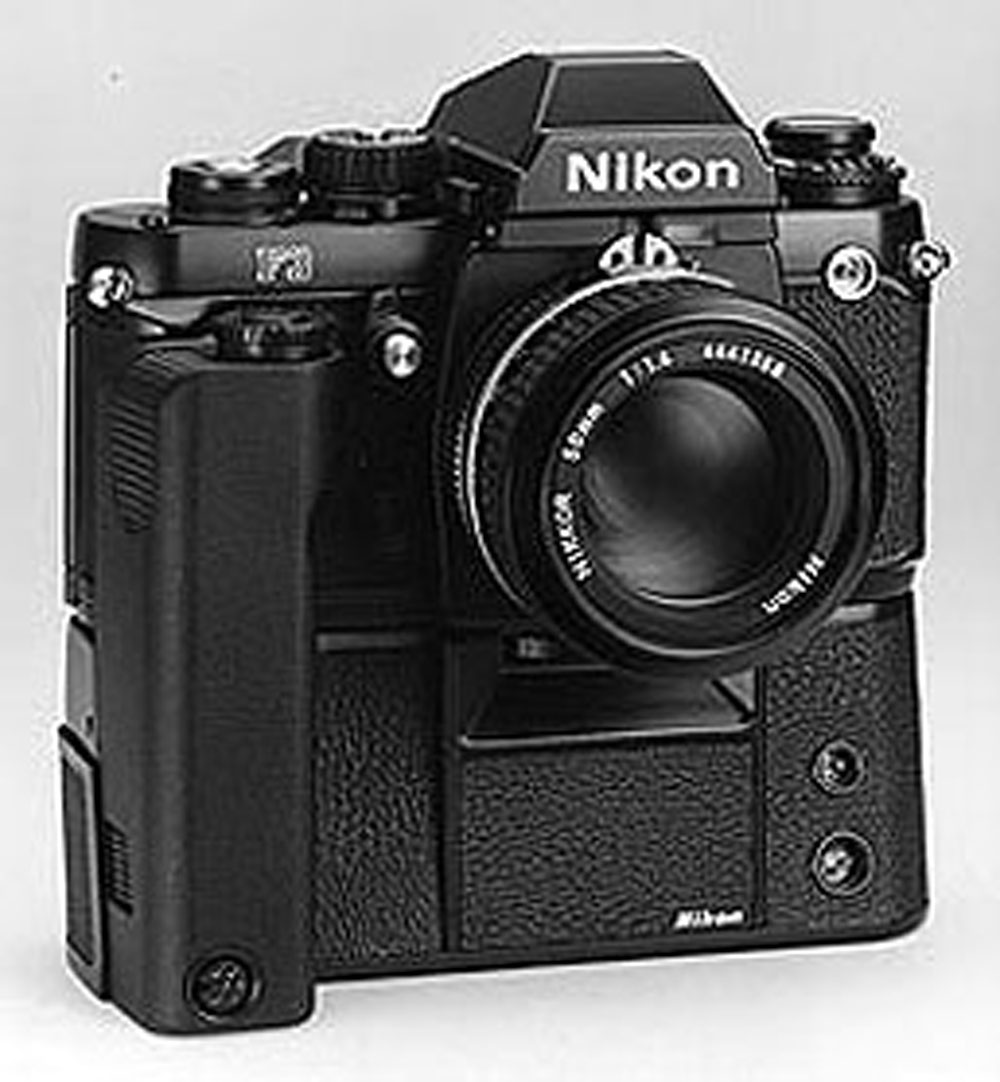
In addition, the use with the motor drive MD-4 allowed using the power supply (size AA battery x 8 or NiCd battery MN-2) for MD-4 to power the F3 body, which helped save the consumption of the two 1.55V SR44 (former known as G13) silver batteries installed for the camera unit. In this way, the increased efficiency of the driving system and power-saving design with the use of the LCD contributed to the achievement of the energy-efficient camera.
In 1982, the titanium body Nikon F3/T was released.
The first use of titanium for the camera body was in 1979, when titanium materials were used for the pentaprism cover, top cover and bottom cover of the Nikon F2 to increase their strength and corrosion resistance.
In 2001, it was announced that production of the Nikon F3 series was discontinued.
Consumer-oriented marketing
As an increasing number of cameras with electronic controls, compact design, and lower prices were introduced, the number of users increased also, and at the same time the market competition among manufacturers became intense. We planned the sales strategy described below based on our understanding that, in the saturated camera market, we could not have an advantage over competitors by relying only on the fact that high-end SLR cameras had a broad base of support among users:
- 1.Broadening the product line
- 2.Increasing the sales promotion and advertising activities
- 3.Reinforcing the training programs for sales personnel and improving the customer service organization
We then worked to promote consumer-oriented marketing.
Among the points of our strategy, the sales promotion and advertising activities were especially accelerated starting around 1980 when the domestic sale of Nikon EM was started.
Consumer-oriented product strategy
With the completion of 4 different product lineups of F3, FE, FM, EM targeting different classes of users, our brand image changed from "Nikon, the manufacturer of high-end SLR cameras" to "Nikon, the all-round single-lens reflex (SLR) manufacturer".
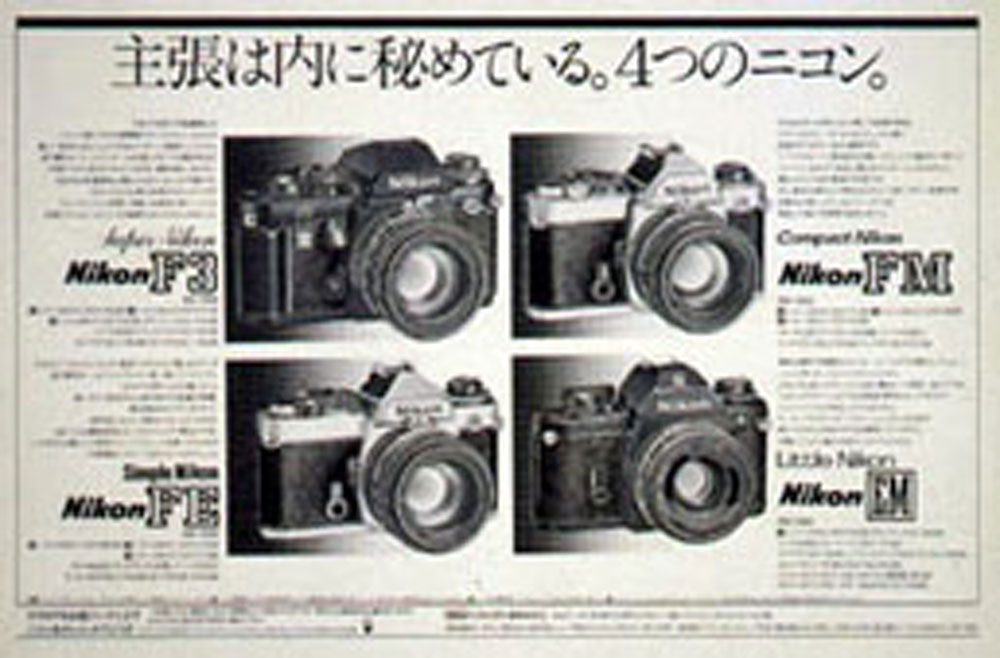
The 4 product lines were referred to as Super Nikon, Simple Nikon, Compact Nikon, and Little Nikon, respectively, and the product strategy was successfully established to accommodate a wide variety of consumers from beginners to professional photographers.
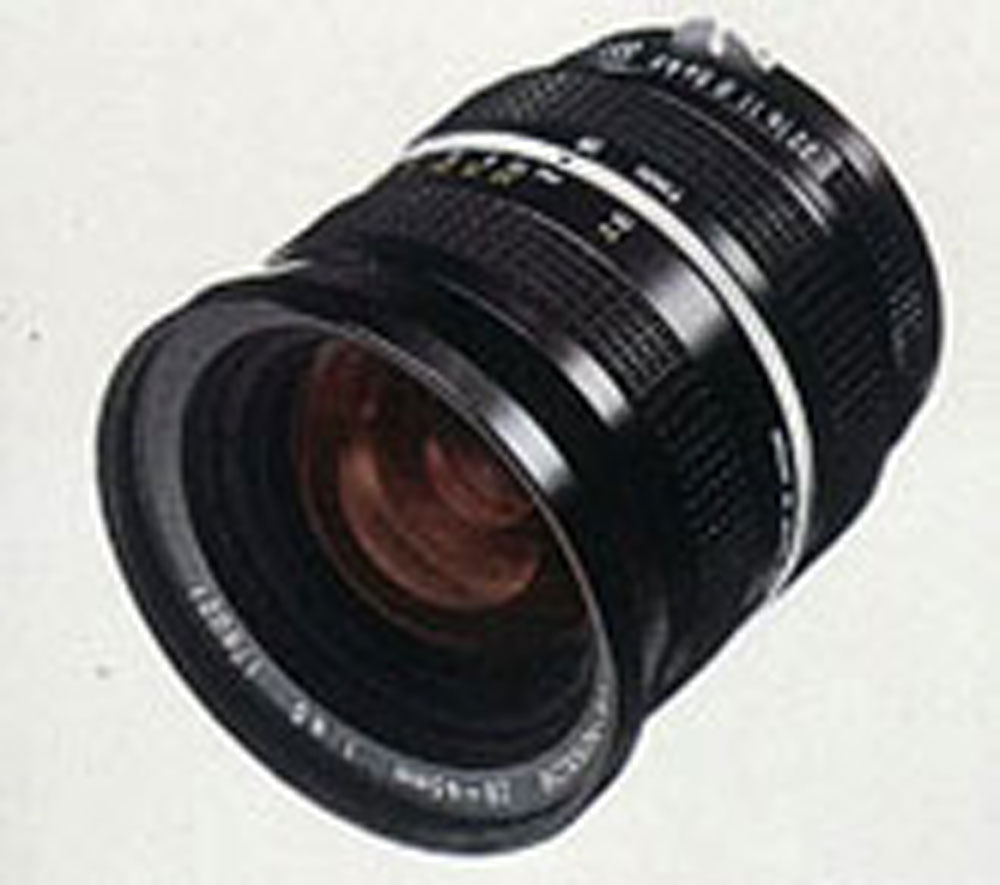
For the interchangeable lenses, a newly designed wide zoom 28 - 45 mm f/4.5 of retrofocus type was released in August 1975 as the world's first full-fledged wide zoom lens.
Our consumer-oriented attitude was clearly demonstrated by the fact that the lens mount remained unchanged when the AI System was adopted for all models of SLR cameras for ease of operation, showing consideration for the users of a total of over 5 million Nikkor lenses. We also gave consideration to modify the conventional lenses to accommodate the AI System in response to requests by users of conventional lenses, and in fact, we made most of the conventional lenses compatible with the AI System.
For this reason, a total of 23 service persons were dispatched to the U.S., Europe, Near and Middle East, Africa, Asia, and Oceania between February and August in 1977 to adapt the conventional lenses to AI System.
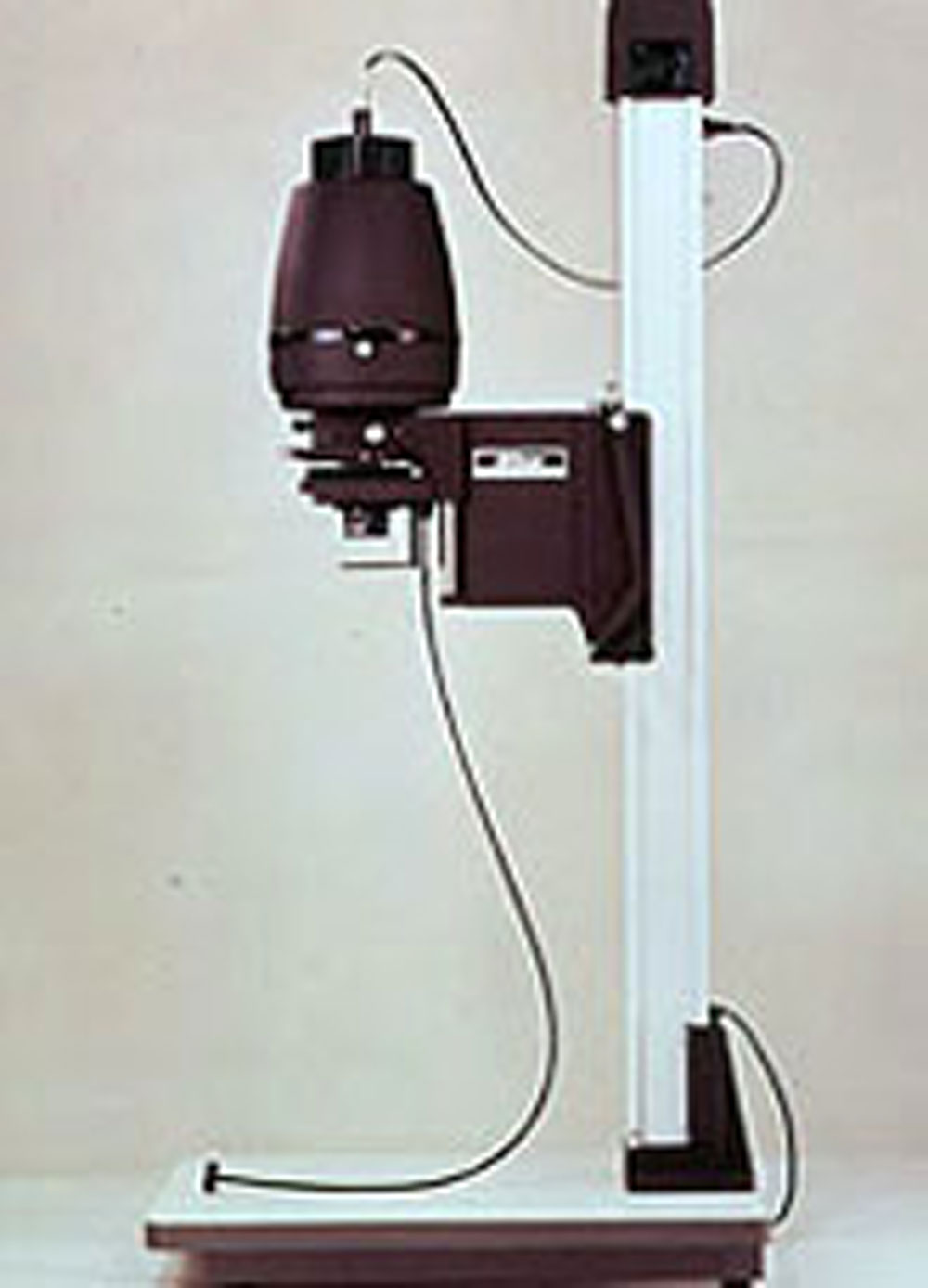
In addition, in order to meet the long-standing request by users that they wished to enlarge the films shot by Nikon cameras with Nikon enlarging apparatus, in November 1975 we introduced Nikon Enlarger RA-350 Auto Focus specifically designed for 35 mm format film.
The RA-350 was configured with the mechanical type of automatic focusing mechanism which eliminated the need for later focusing, once proper focus was attained. The enlarger provided higher repeatability with proper number control attained by using it with the provided enlarging lens EL-Nikkor 50 mm f/2.8.
The light source provided the condenser-diffuser-type illumination using spherical reflector, of original design, to suppress possible uneven illumination.
Production of RA-350 was discontinued in December 1980.
Stepping up sales promotion and advertising activities
As Nikon FM, FE and other compact and/or lightweight models were released, different sales promotion and advertising activities were implemented according to the regular users of the different models.
The new catalog for FE was well received because of its urban-oriented editing using the jazz musician Sadao Watanabe as image character model.
In March 1975 Nikon World was published as a revised edition of the Nikkor Lens Handbook. This was renamed New Nikon World in September 1979 and presented to the Nikon camera users as a guidebook to make full use of Nikon SLR cameras.
In January 1979, the monthly magazine Top Eye was published focusing on the camera circles in the senior high schools across the country for sales promotion of FE and FM.
In addition, a total of 100 meetings and events were held every year including new product exhibitions, product demonstrations, indoor picture taking events, and camera inspections.
Furthermore, as the lower-priced model Little Nikon = Nikon EM was brought out, the sales promotion and advertising activities were completely modified to actively conduct a campaign to improve the image of Nikon, so as to increase its appeal for young people.
In August 1980, the magazine-like guidebook EM IMAGE was published as a sales promotion of Nikon EM. In conjunction with this, the EM monitor campaign was started to invite student monitors and group monitors of junior and senior high school camera circles, and the number of applicants from all parts of the country exceeded 80,000 individuals and 3,000 schools.
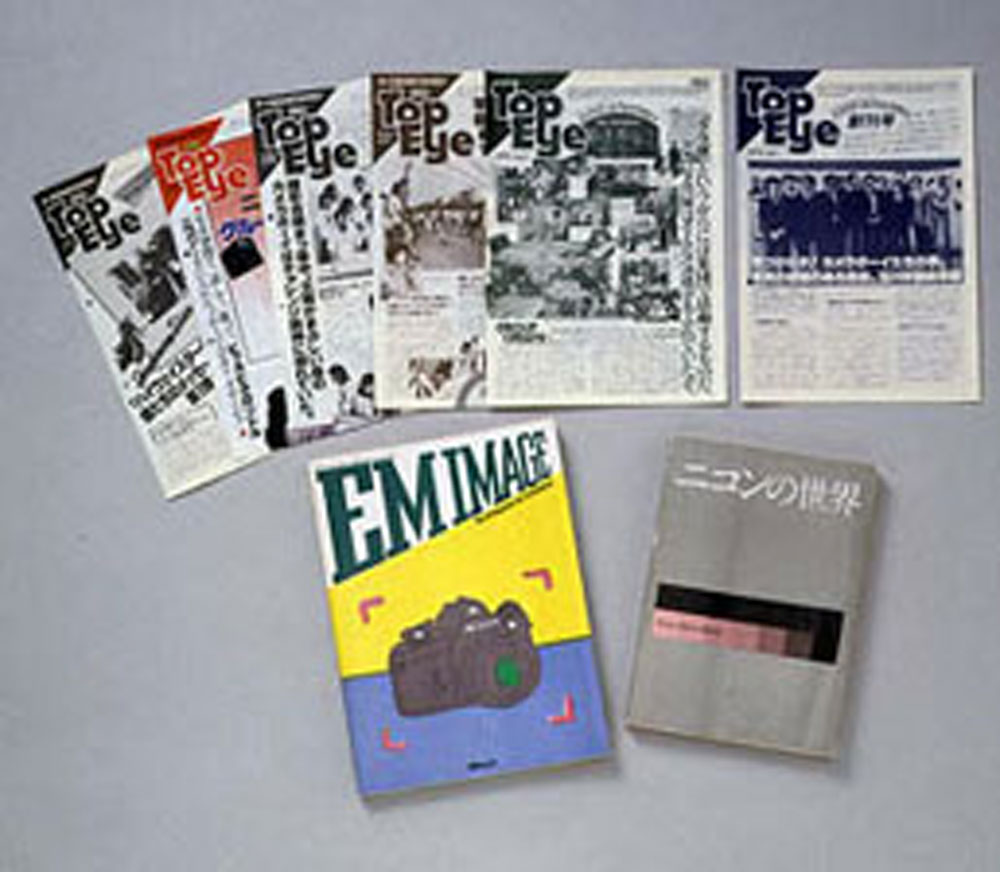
In December, a Miss Smile Contest was held to promote the ease-of-operation of EM, and it became the focus of public attention as the photo contest of smiling faces rather than a beauty contest, with a total number of photo submissions exceeding 20,000. The ads announcing the results of the contest were placed in camera magazines for young people including "Sharaku" (Shogakukan Inc.) and "CAMERAMAN" (Motor Magazine Sha) for a total of 11 times in about a year.
In August 1981, the "Nikon Young Girls Contest" was announced to improve the image and brand name of EM.
TV advertising was also active. The CF of EM gave people a lot to talk about due to the unique contents involving the appearance of school camera circle members, the presidents of student councils, and other members of the general public.
Introducing automatic focusing into SLR cameras
1/4,000 sec. technology
Subsequent to Nikon FM, Nikon FE, and Nikon F3, the next technical challenge the R&D staff was urged to deal with was the "high-speed shutter."
The high-speed shutter was intended to speed the travel of the shutter foil up to the maximum extent possible in order to increase the Speedlight synchronization speed compared to 1/125 sec. for the existing 35 mm (135) format focal-plane shutters. A shutter speed of 1/4,000 sec. was attained for the focal-plane shutters, two times faster than the then highest speed of 1/2,000 sec.

In 1977, the camera designer team addressed the challenge based on the basic plan to minimize any increase in driving power and reduce the weight of light-shielding components. A focal-plane shutter with a vertical-travel blade (up-down movement) lighter in weight was adopted, and industrial-grade pure titanium "TP35" was selected for the material of the blade. In order to obtain a lightweight and highly rigid blade, the lightening area and depth were determined based on careful consideration of the relationship between the blade flexural rigidity and lightening depth, processing accuracy of lightening, and frequency of occurrence of pinholes.
The honeycomb design (lightweight and robust structure due to the lightening, like an hexagonal honeycomb) was adopted because it offered the advantage of increasing blade rigidity while ensuring proper flatness, and minimizing the friction between the blades. In addition, other measures were implemented including depositing a nitride film on the blade surface to harden it.
As a result, the weight of the light-shielding members was decreased to two-fifths of the conventional weight (to 1.13g from 2.72g), and the travel speed of the shutter foil was also accelerated to 6.7 m/sec. (3.6 ms) from 3.4 m/sec. (7 ms), about two times faster.
In March 1982, Nikon FM2 went on sale with the mechanically controlled focal-plane shutter featuring the world's first maximum speed of 1/4,000 sec., and the Speedlight synchronization speed of 1/200 sec. In addition, Nikon FE2 (March 1983) and Nikon New FM2 (March 1984) with the electronically controlled focal-plane shutter featuring a synchronization speed increased to 1/250 sec. were released in succession, opening the era of SLR cameras with a shutter speed of 1/4,000 sec.
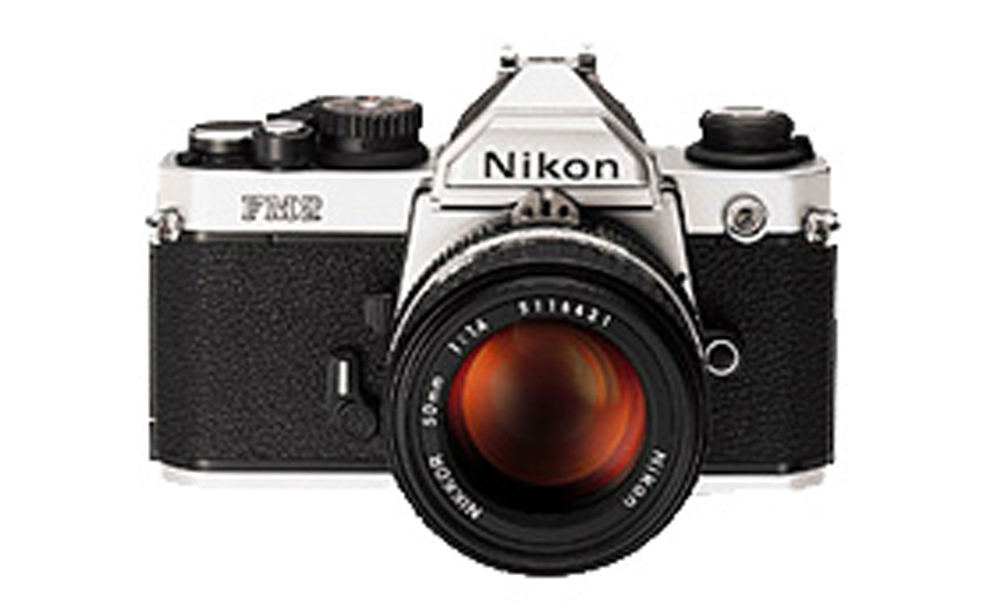
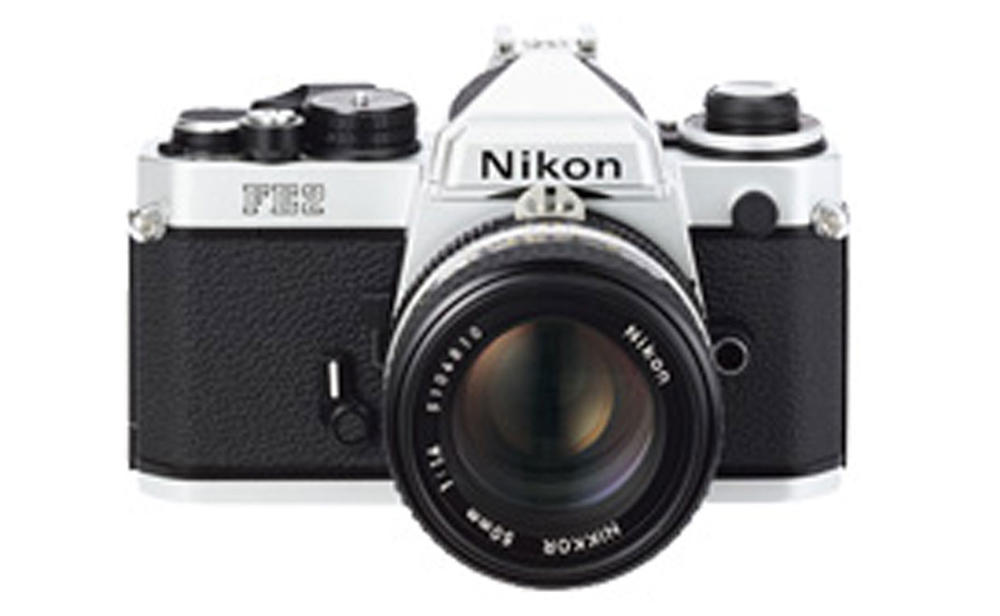
In October 1982, the technology was awarded the Technology Development Award (the award following the spirit of the Okoshi Memorial Award) by the Precision Engineering Association (the present Japan Society for Precision Engineering, JSPE). One of the reasons cited for the award was "the establishment of a technology for mass production of honeycomb-shaped lightening of titanium foil."
In addition, Nikon FM2 was awarded the Nikkei FY1982 Product of the Year sponsored by Nihon Keizai Shimbun, Inc.
Enhanced metering performance and automatic exposure control
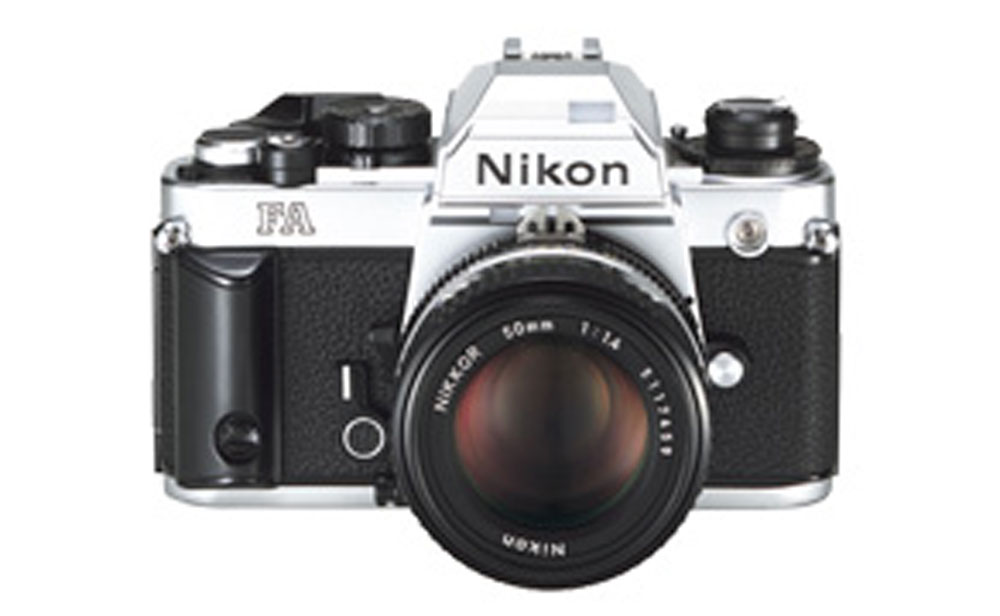
In addition to the development of the high-speed shutter, there was another technical challenge or enhancement of the metering performance. Around 1965, when we introduced the TTL metering system, we adopted the averaged brightness measuring system, which was eventually replaced by the center-weighted exposure measurement in 1967 because correct exposure could be achieved even if the subject and the background have different levels of brightness.
Nevertheless, if the brightness of the subject is very different from that of the background, such as in the case of backlighting, exposure compensation is necessary in some cases to ensure correct exposure. Automatic control of the exposure compensation was the other technical challenge.
We started taking on the challenge in 1977, and were successful in developing the so-called AMP (automatic multi-pattern) metering system which automatically provides correct exposure with a greater accuracy by measuring exposures independently at 5 separate segments on a finder image, and processing the exposure measurements with a microcomputer. In September 1983, we released Nikon FA which incorporated the world's first AMP metering system.
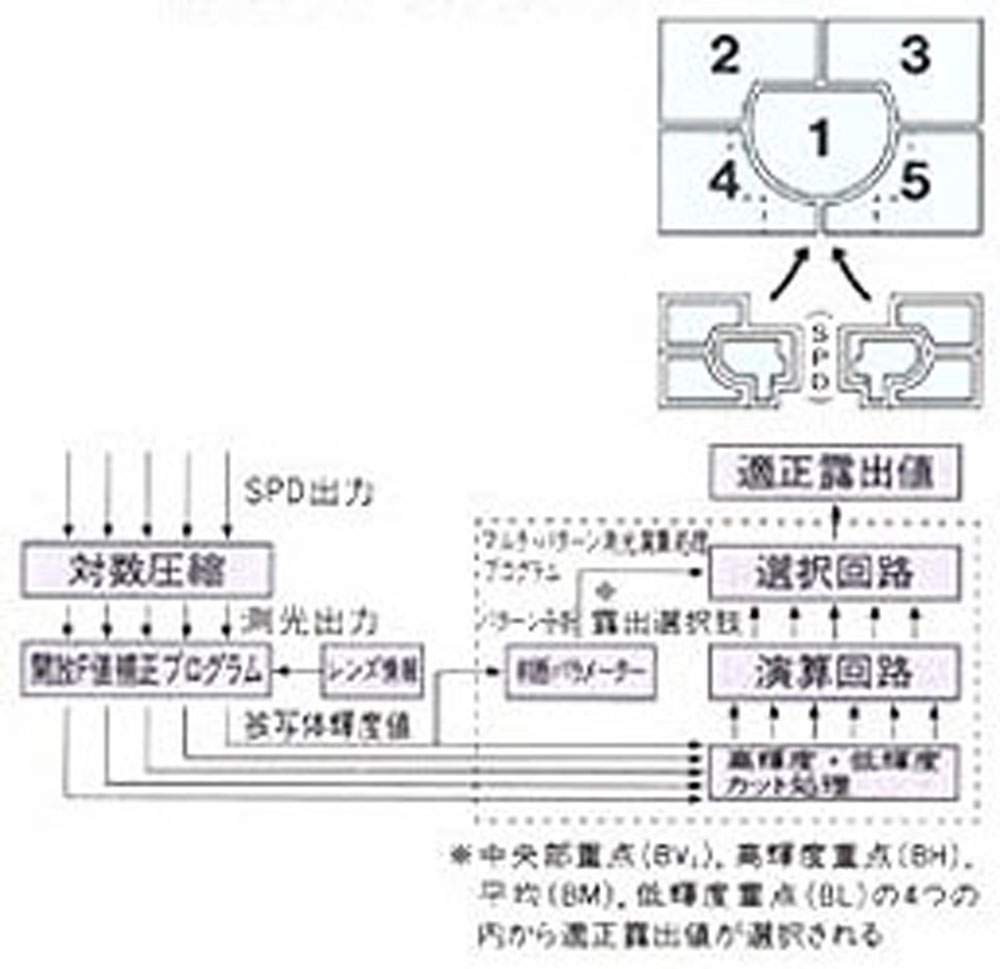
In the (5-segments) multi-pattern metering for Nikon FA, exposure measurements obtained by 5 light sensors are subjected to elimination of higher and lower brightness values, and then the optimum exposure value is calculated by a 4-bit microcomputer. During the process, pattern analysis is carried out based on the maximum brightness value, difference in brightness, the number of eliminated brightness values, and the information about individual positions and where they belong, either the dark side or the light side, to select any one of 4 exposure-determining methods for microcomputer processing. The processing program was selected through the data processing of over 10,000 actual shooting data by a large mainframe computer. This metering system is highly regarded for meeting the photographic purposes of professional photographers.
The Nikon FA came equipped with the multi-pattern metering system, 1/4,000 sec. high-speed shutter, and Nikon's first shutter speed-priority automatic exposure control mode.
In addition, the high-speed automatic mode selection was also incorporated to prevent possible camera-shake during the mounting of telephoto lenses with a focal length of 135 mm or more, which made this model a new and powerful SLR camera to answer a variety of needs from shutterbugs to professionals.
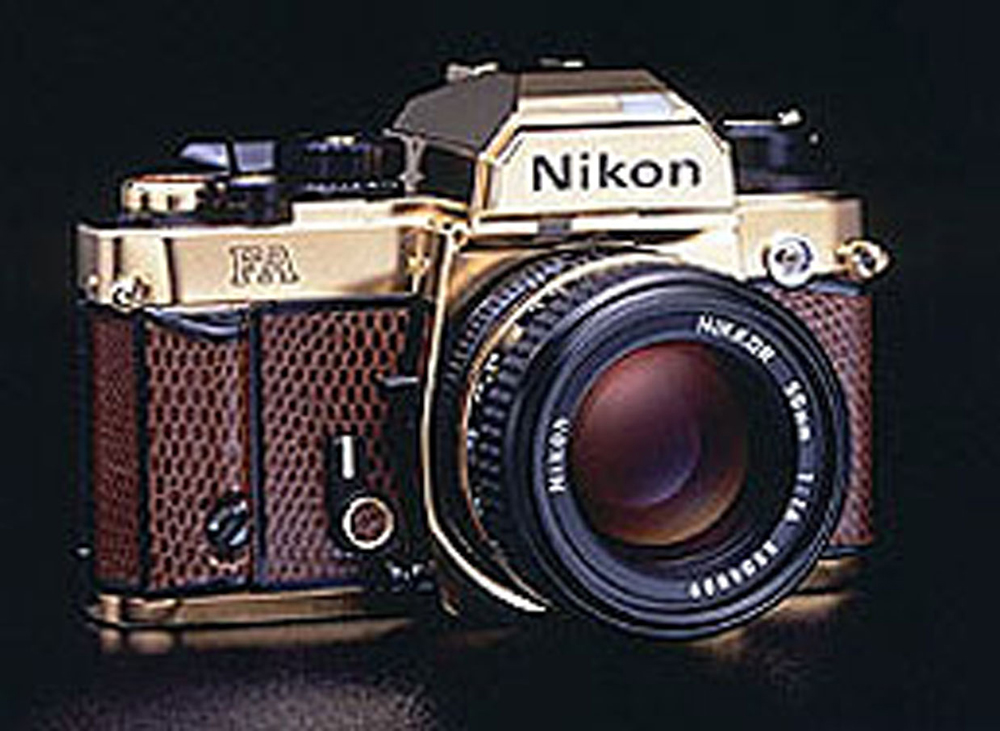
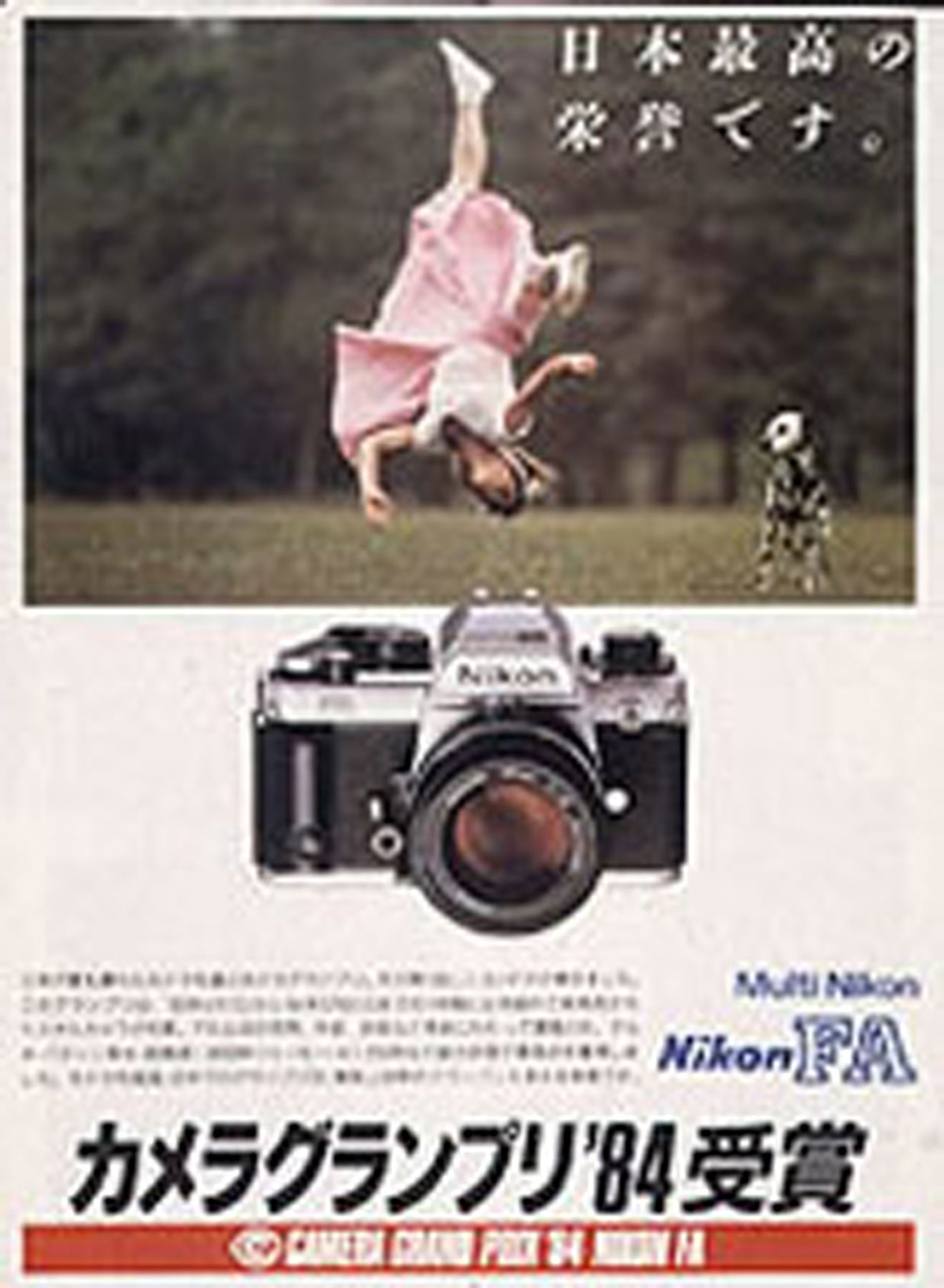
Nikon FA won the Camera Grand Prix '84. The Camera Grand Prix, first awarded in that year, was the first authoritative prize in the Japanese world of cameras to commend one model of the best camera every year among the still cameras sold in the home market.
To commemorate the prize, we offered 2,000 Nikon FA Gold cameras (at 500,000 yen for a set of body and AI 50 mm f/1.4S lens) as a limited model.
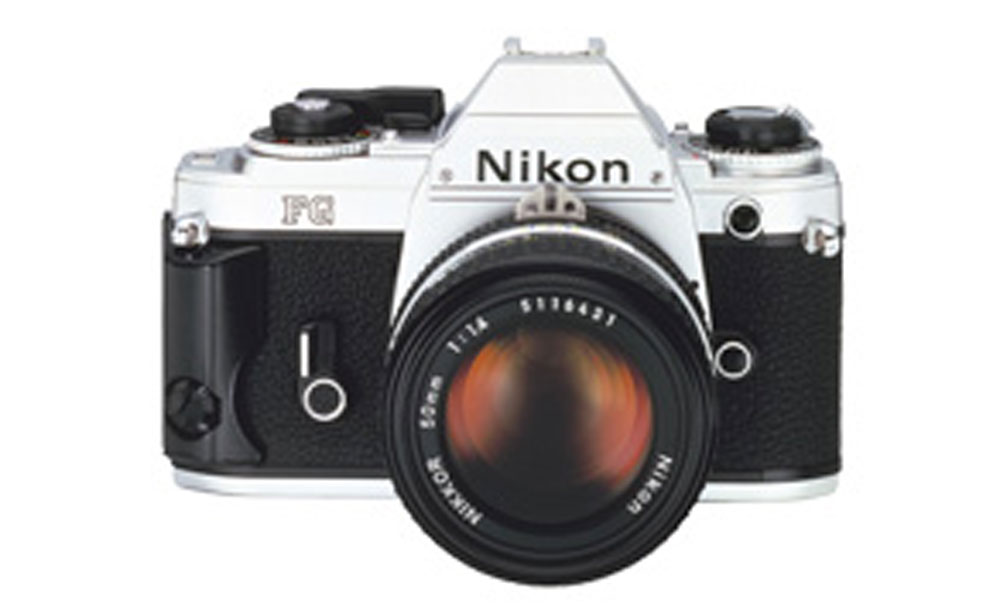
In May 1982, Nikon FG (with AI 50 mm f/1.8S, at a suggested retail price of 81,000 yen) was released incorporating the program AE with the instant stop-down exposure metering, manual exposure control, and TTL automatic flash exposure control for the Speedlight in the body of Nikon EM.
The FG featured the LED (light emission diode) display of shutter speed on the viewfinder.
In March 1984, the even lower-priced SLR camera Nikon FG-20 (with AI 50 mm f/1.8S, 68,000 yen), with auto and manual focusing, went on sale with the catchphrase "Users at all levels of expertise from beginners to professionals can enjoy taking pictures."
The FG-20 model (body alone at 48,000 yen) featured the program AE, TTL automatic flash exposure control and other functions eliminated from the FG (body alone at 61,000 yen), with the shutter speed display on the viewfinder based on the meter indication design similar to the EM (body alone at 40,000 yen).
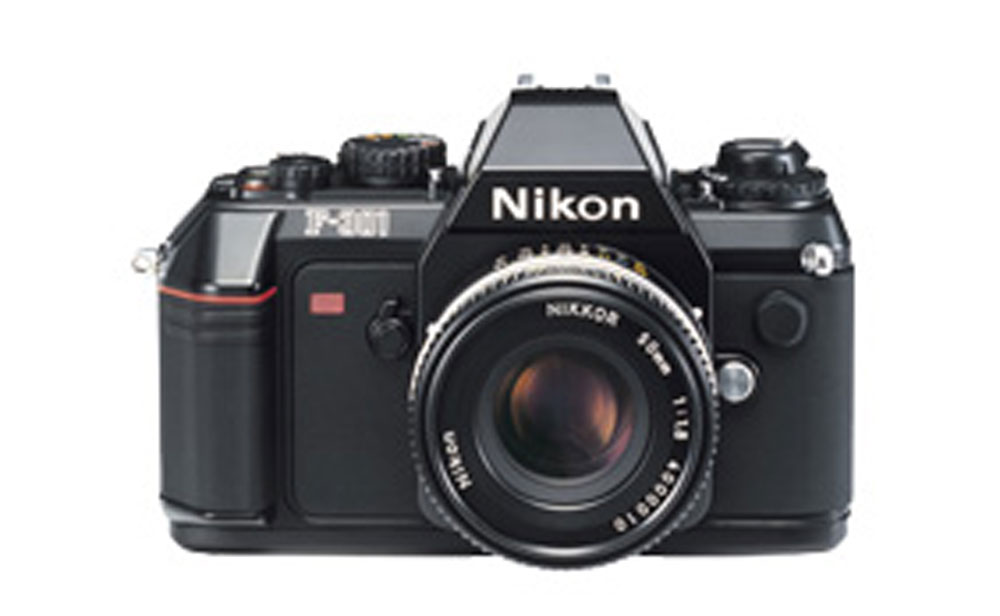
Nikon F-301 (with AI Zoom Nikkor 35 - 70 mm f/3.3 - 4.5S, 107,000 yen) released in September 1985 was Nikon's first built-in motor drive AE SLR camera featuring automatic winding and continuous shooting (2.5 frames/sec.).
This model was the first among Nikon's SLR cameras to adopt the easy-load feature (simplified film loading), and it had a good reputation for its ease of operation comparable to compact cameras and thus helped increase the sales in the SLR camera market that at the time was in the doldrums.
In the area of interchangeable lenses, zoom lenses became prevalent from around 1975, and the ratio of zoom lenses to the total production of interchangeable lenses for 35 mm format cameras exceeded 50% in 1982 and reached 79.7% in 1985, from 19.8% in 1975 (based on the data by the Japan Camera Industry Association, JCIA).
We were quick to introduce the zoom lenses for 35 mm cameras to the market in 1959, after which we continued supplying a variety of zoom lenses intended primarily for professional photographers. Based on these real accomplishments, we were urged to offer higher performance to meet the demands of professional photographers even for zoom lenses, which were useful although they offered lower image quality compared to the single focal-length lenses. Then, we pushed ahead with the plan to supply wide-angle zoom lenses and successfully released the new Zoom-Nikkor 28 - 45 mm in 1975 and AI Zoom-Nikkor 25 - 50 mm in 1979. In 1982 we introduced a total of 6 models of zoom lenses including the AI Zoom-Nikkor ED360 - 1200 mm f/11S that provided enhanced performance through the use of ED glass, after which we continued adding different zoom lens models year after year.
In 1986, the sales volume of zoom lenses exceeded 50% of that of lenses for Nikon F.
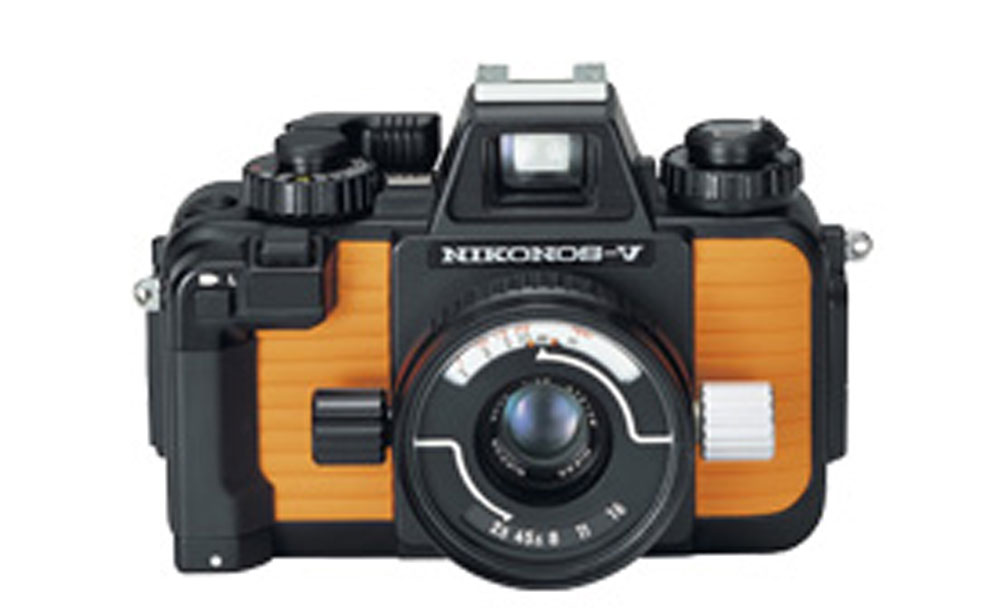
Also, for all-weather amphibious cameras (all-weather cameras), we incorporated electronics into the NIKONOS IV-A released in July 1980 and implemented the aperture-priority automatic exposure control.
In April 1984, NIKONOS-V was released with two exposure control systems, aperture-priority automatic and manual, and also the TTL automatic flash exposure control. When coupled with the specifically designed Speedlight, NIKONOS-V made it possible to take pictures in water even at a distance as short as 30 cm using the TTL automatic flash exposure control. The NIKONOS-V soon became the flagship underwater camera for eliminating the difficulties of underwater photography to a reasonable extent.
Discontinuance of sales of NIKONOS-V was announced in 2001.
Incorporating the AF into SLR cameras
For the development of AF-integrated SLR cameras, we conducted a survey to identify what is most required for AF that takes advantage of the SLR.
As a result, one of the objectives of the development included using AF to make it possible to capture a moving subject difficult to keep in focus by manual focusing (e.g., bringing a moving object quickly into focus with a telephoto lens), and the basic design was based on the following 4 objectives:
- 1.Adoption of TTL phase-difference detecting method (detection of displacement of image): Less susceptible to contrast.
- 2.Quick response: Available instant focusing, suited to capture moving objects, compatible with motor drive
- 3.AF detecting mechanism integrated in the finder, and
- 4.Easy to operate
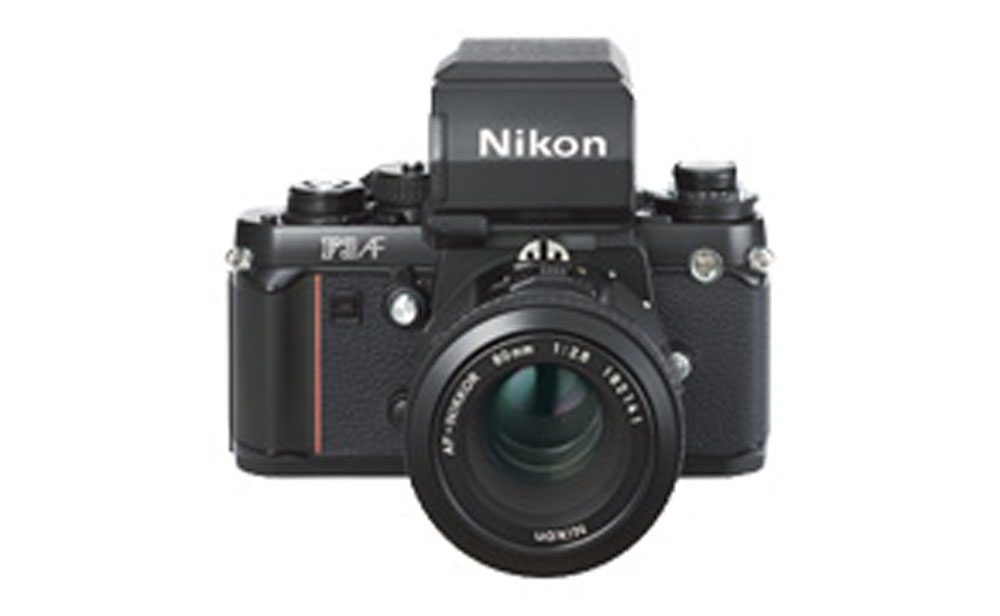
In accordance with the objectives, the engineering team took on the challenge of developing the AF mechanism and in April 1983, the Nikon F3AF was released. This was an AF camera based on the body of Nikon F3, containing a signal contact in the body for signal transmission and power supply through the body between the eye-level type AF finder DX-1 (with 1.5V R03 battery x 2) and the driving motor built-in AF lens.
The Nikon F3AF enabled the quick response to focusing by instant focus detection through real-time information processing by the analog circuit, using an SPD (Silicon Photo Diode) array as the sensing element.
For the AF lens, two models were developed, the AI AF Nikkor 80 mm f/2.8S and AI AF Nikkor 200 mm f/3.5 IF-ED. Both lenses contained the coreless micromotor-based operating unit on the periphery of the lens barrel and achieved the operating speeds of 0.6 sec. from infinity to 1 m for the 80 mm lens, and 1.7 sec. from infinity to 2 m for the 200 mm lens, taking advantage of the IF (Internal Focusing).
For a lens having a longer focal length, the large and heavy lens has to be moved in order to bring a subject into focus based on the all-element focusing method. Our IF methodology contributed to make the focusing operation light and smooth and improved the lens holding balance by moving a limited number of elements in the lens system.
The suggested retail price of Nikon F3AF was 250,000 yen for the body alone (with AF finder DX-1) and 330,000 yen for the model with AI AF Nikkor 80 mm F2.8S.
In February 1985, the domestic compact-sized AF SLR cameras appeared on the market and became popular with the lens motor drive built-in in the body of a new lens mount design. This caused the industry to predict that the shipment of SLR cameras to the home market in FY 1986 would consist of more AF models than manual focus models.
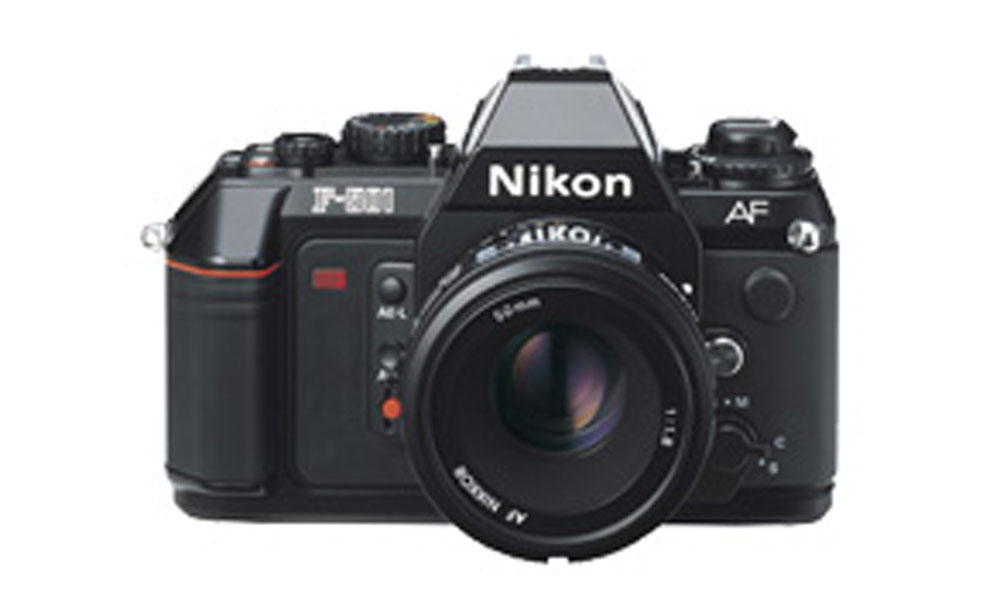
Under the circumstances, we hurried to implement the body-powered AF SLR camera and successfully released the body-powered automatic focusing camera Nikon F-501 (body alone at 89,000 yen) in April 1986, by inheriting the F mount.
This AF camera incorporated the distance-measuring element based on the previously developed TTL phase difference detecting method, and thus implemented highly accurate, faster and reliable focusing by means of the two AF modes, single and continuous, and by manual focusing, with the focus aid (FA) showing the correct focusing by indication in the viewfinder in the case of any AF Nikkor lens or a lens with an f-number of f/4.5 or smaller.
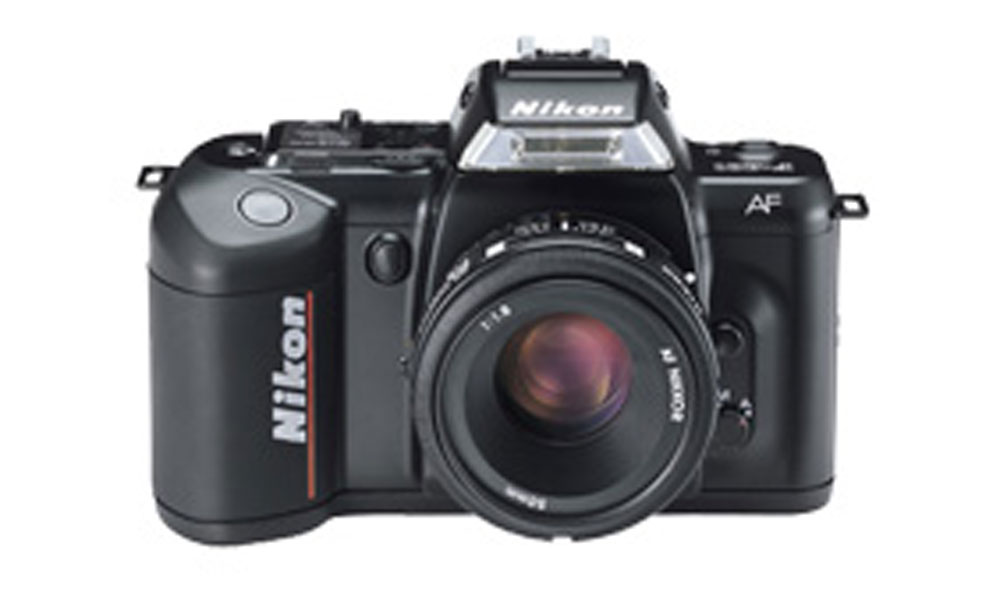
June 1987, the body-powered AF SLR camera Nikon F-401 (body alone at 64,000 yen), developed as a lower-priced model to deal with the yen appreciation, went on sale.
F-401 was the world's first AF SLR camera with the TTL automatic flash exposure control Speedlight, and it was cost (price) effective with the single AF servo (AF-priority allowing the shutter to be pressed when the subject comes into focus) and 4 exposure modes.
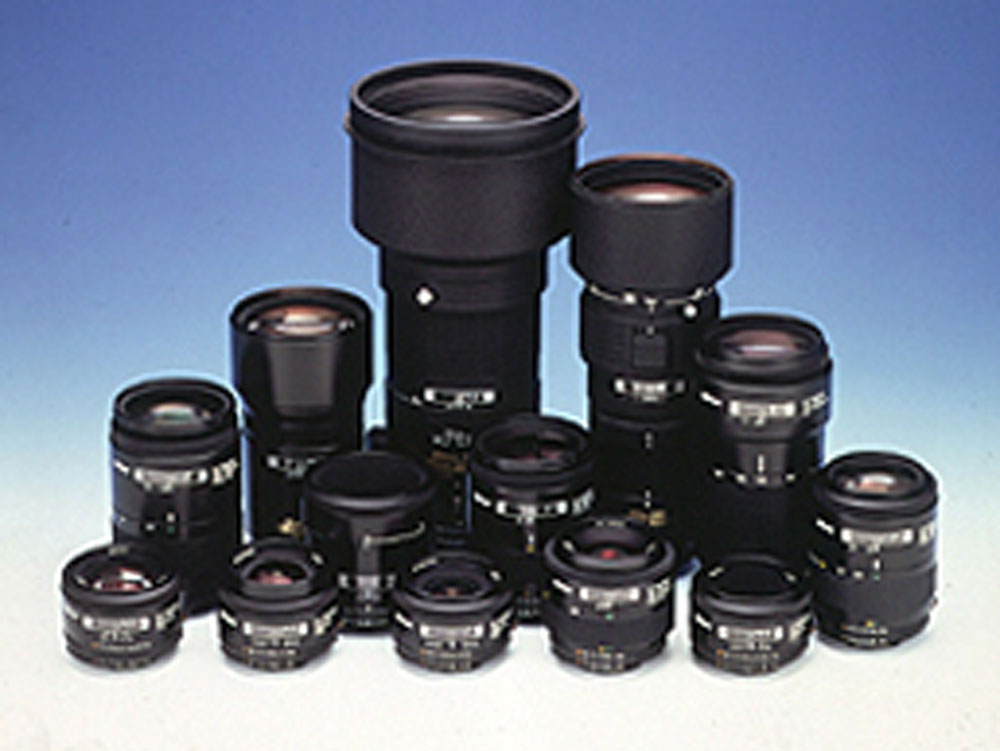
In April 1986, when Nikon F-501 was released, the AI AF Nikkor 50 mm f/1.8S, AI AF35 - 70 mm f/3.3 - 4.5S and 3X telephoto zoom AI AF 70 - 210 mm f/4S went on sale and in July AI AF 35 - 105 mm f/3.5 - f/4.5S was placed on the market.
Additional models were later introduced, and in March 1988 the AI AF Nikkor lens series reached a total of 20 models.
Product and company names in this article are trademarks, registered trademarks, or products of their respective owners.
Colors of product photographs on the monitor may differ from the colors of the actual products.
Camera Chronicle
Archives of corporate history subject matter related to Nikon cameras, including rare materials, as well as product photos of cameras and lenses.
